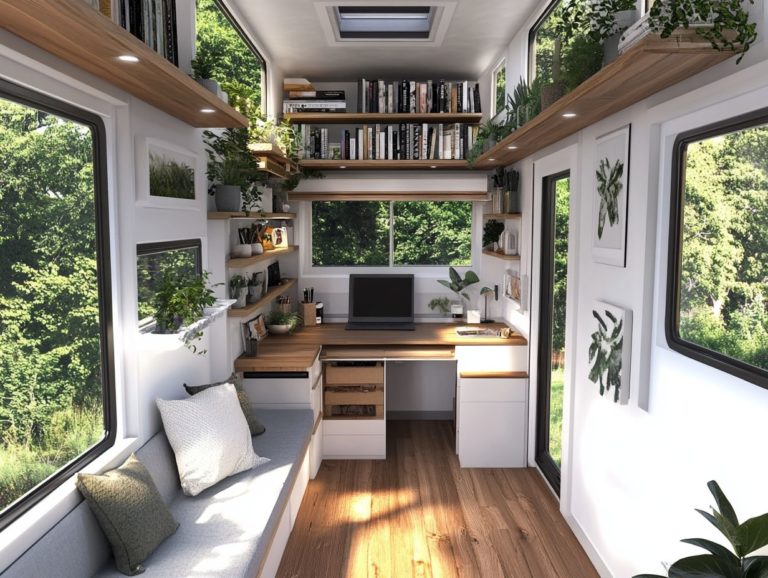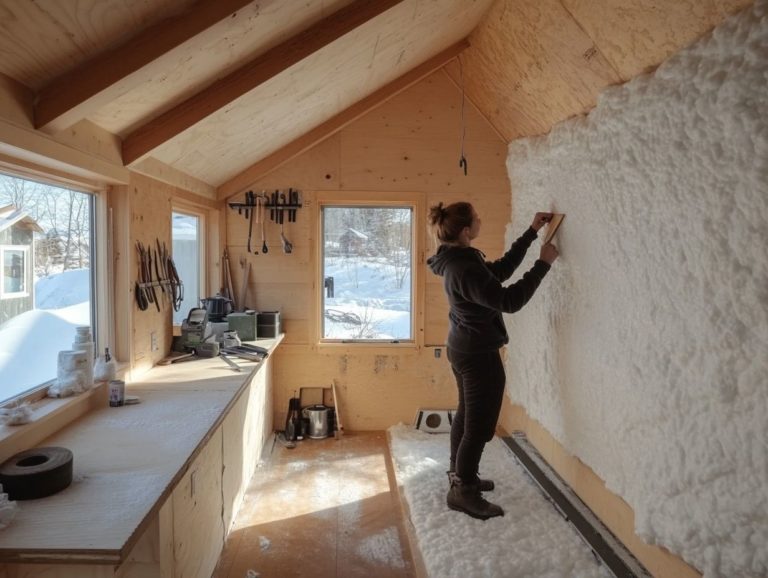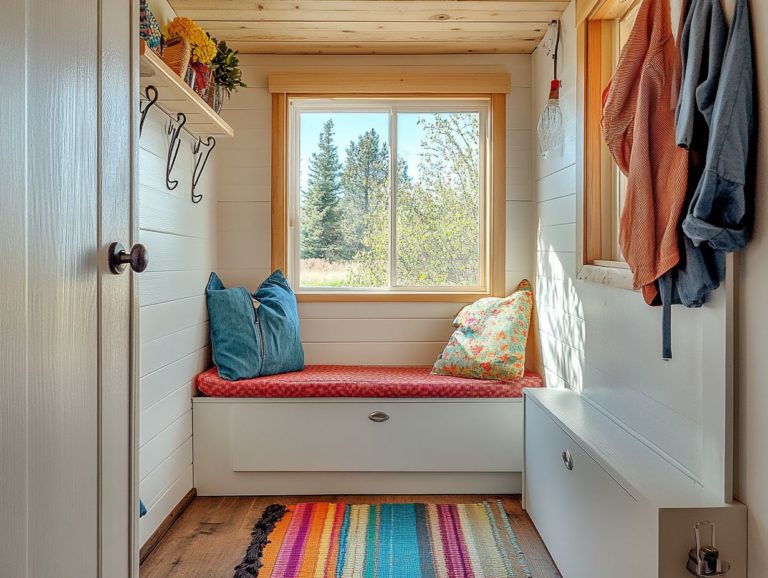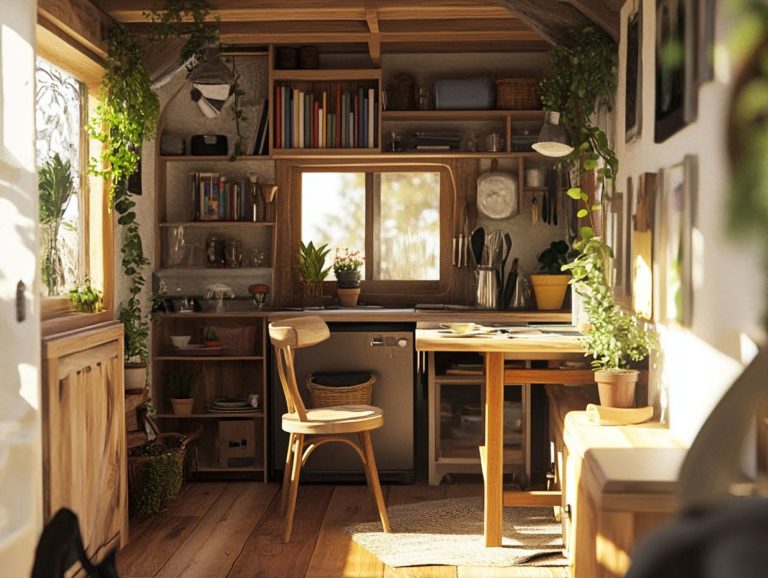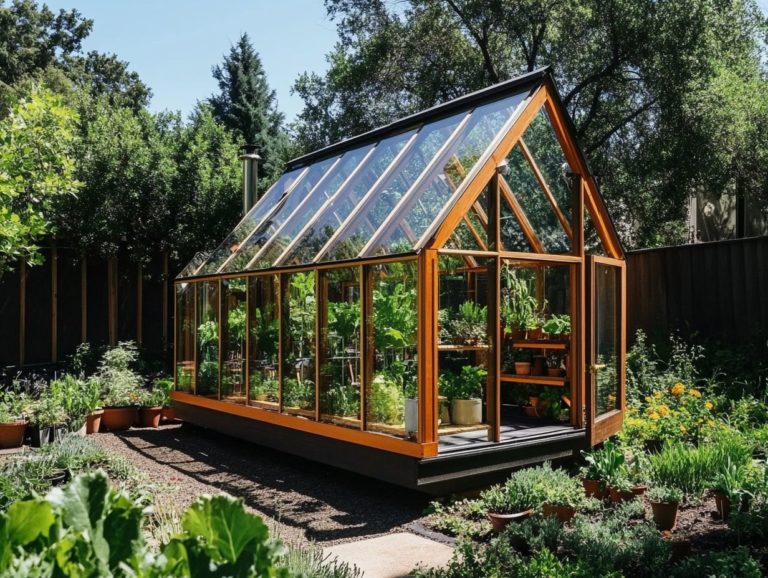Quick DIY Fixes for Tiny House Problems
Living in a tiny house presents a distinctive lifestyle, yet it brings its own array of challenges.
From repairing a leaky roof to optimizing your limited space and managing pesky intruders, each tiny homeowner encounters obstacles that demand creative solutions. Whether you’re grappling with storage dilemmas, plumbing upgrades, or striving to create a warm and inviting kitchen, dive into this guide for practical DIY fixes that can transform your tiny house living today!
Explore the insights within to elevate your living experience while ensuring your home remains both cozy and functional!
Contents [hide]
- Key Takeaways:
- 1. Fixing a Leaky Roof
- 2. Dealing with Limited Storage Space
- 3. Maximizing Small Living Areas
- 4. Upgrading Plumbing and Electrical Systems
- 5. Dealing with Pests and Rodents
- 6. Insulating for Extreme Temperatures
- 7. Dealing with Moisture and Mold Issues
- 8. Upgrade Your Appliances Today!
- 9. Creating a Functional Kitchen
- 10. Dealing with Limited Bathroom Space
- 11. Transform Your Outdoor Oasis!
- 12. Improving Air Quality
- 13. Creating a Comfortable Sleeping Area
- 14. Dealing with Noise and Privacy Issues
- 15. Maintaining and Repairing a Tiny House on Wheels
- Frequently Asked Questions
- What are some common tiny house problems that can be fixed with quick DIY solutions, such as plumbing issues related to water tanks?
- How can I fix a clogged drain in my tiny house, especially considering the water systems?
- What should I do if my tiny house’s electricity goes out, especially when living off-grid?
- How can I repair a leaky roof in my tiny house, especially during the winterization process?
- What are some DIY solutions for adding more storage space in a tiny house and maximizing vertical space?
- Can I fix a broken appliance in my tiny house on my own, especially those approved appliances?
Key Takeaways:
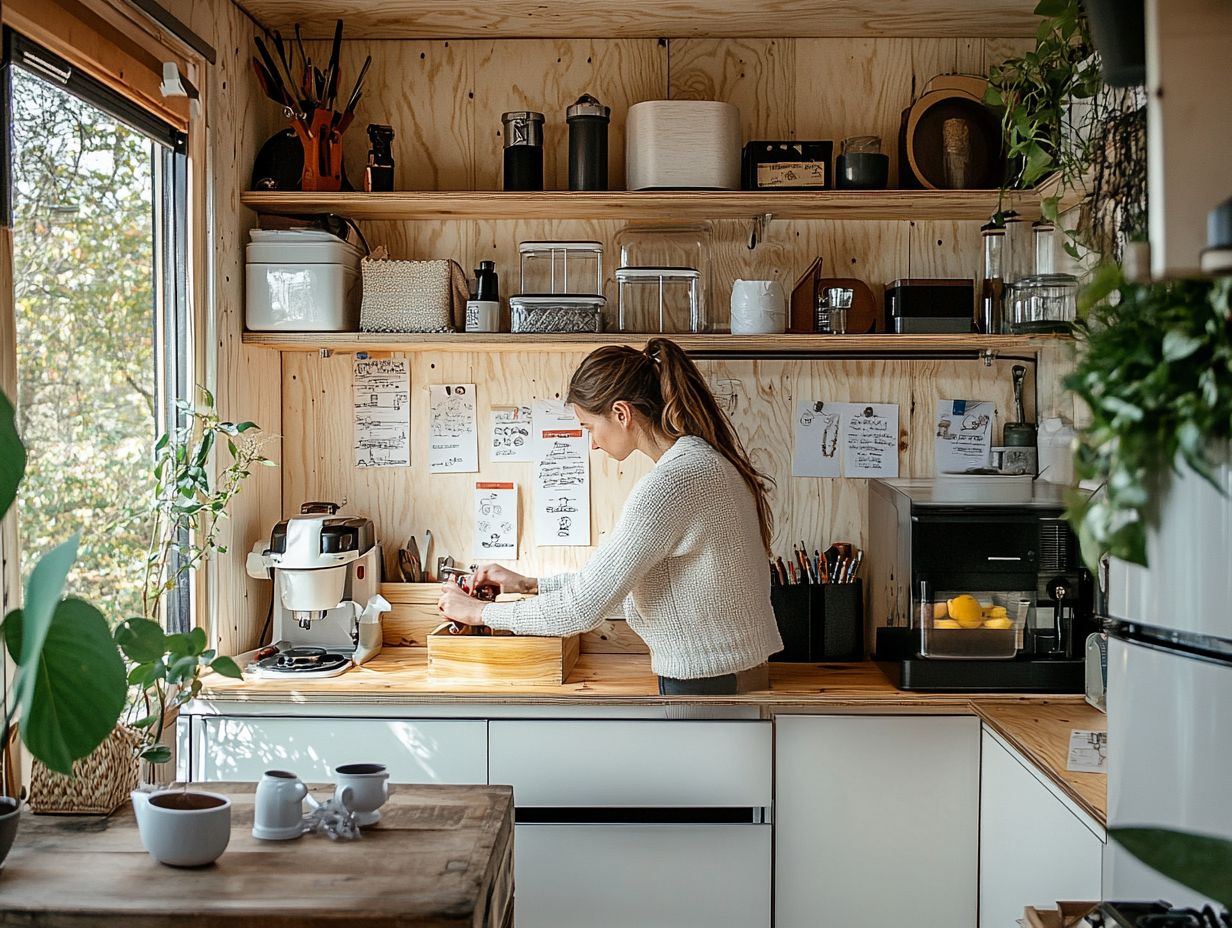
- Fixing a leaky roof is essential to preventing water damage and maintaining a dry, comfortable living space in a tiny house.
- Maximizing storage space is crucial for keeping a tidy and organized tiny home. Furniture that serves more than one purpose can help.
- Small living areas can be made more spacious and functional with creative storage solutions, such as built-in shelves and hidden storage compartments.
1. Fixing a Leaky Roof
Fixing a leaky roof is an essential aspect of maintaining your tiny house that can greatly influence both comfort and durability. Whether you re just starting your tiny house adventure or have years of experience, knowing how to tackle leaks effectively is crucial for keeping your water source secure and your living space dry.
With the right techniques and tools at your disposal, even the smallest repairs can avert larger issues in the future.
Regular inspections are key! They help you catch problems before they escalate. By scrutinizing seams and edges, you can spot any weaknesses before they turn into major problems. Applying caulking to vulnerable areas not only seals gaps but also provides an extra layer of protection.
In some situations, bringing in construction professionals can offer valuable insights and ensure your repairs are executed flawlessly. Emphasizing the importance of ongoing maintenance will safeguard your investment, ensuring your tiny house remains a cozy refuge for years to come. Exploring smart design solutions for tiny house living can also enhance your space effectively.
2. Dealing with Limited Storage Space
Dealing with limited storage space in a tiny house can feel like a puzzle, but with some innovative solutions, you can maximize every inch of your small sanctuary without sacrificing comfort or functionality.
One effective strategy is to incorporate furniture that serves more than one purpose that marries style with practicality. Picture this: a sleek sofa that morphs into a cozy bed while cleverly hiding compartments for your blankets and pillows.
Next, think vertically. Utilizing wall-mounted shelves or hooks can help you organize everything from books to kitchen utensils, transforming previously overlooked spaces into functional storage areas.
Custom cabinetry designed to fit those awkward nooks can create plenty of storage without crowding the room. For mobile homes, consider tapping into underfloor storage or built-in benches to further enhance space efficiency. Additionally, if you’re looking to enhance your tiny home’s curb appeal, check out these tips for a DIY tiny house exterior makeover, turning compact living into a well-organized haven.
3. Maximizing Small Living Areas
Maximizing small living areas in your tiny house calls for thoughtful design and a keen focus on functionality, allowing you to create a space that feels open and inviting, even with its limited square footage.
Incorporating design principles like open floor plans can significantly enhance your sense of space, enabling seamless transitions between different areas. Don t underestimate the power of natural lighting; large windows or strategically placed skylights can flood your interior with light, brightening the space and making it appear larger.
Using mirrors can work wonders, reflecting light and creating an illusion of depth that tricks the eye into perceiving more room than there actually is. When selecting furniture, opt for pieces that are both stylish and practical. Prioritize multi-functional items, like ottomans or fold-out desks, that won t overwhelm the area, ensuring your tiny home maintains a sense of balance and harmony.
4. Upgrading Plumbing and Electrical Systems
Upgrade your plumbing and electrical systems for safety and efficiency. This allows you to fully embrace the comforts of modern living while adhering to necessary regulations for registered appliances.
Start by assessing the existing systems. Look for outdated components that could hinder performance. Consider incorporating energy-efficient upgrades that align with your green living aspirations think low-flow fixtures for plumbing and LED lighting paired with smart thermostats for your electrical systems.
It’s crucial to engage qualified construction professionals who have the expertise to navigate these complex installations, ensuring compliance with local building codes. This will elevate your comfort and reduce long-term costs while enhancing your home s overall functionality.
5. Dealing with Pests and Rodents
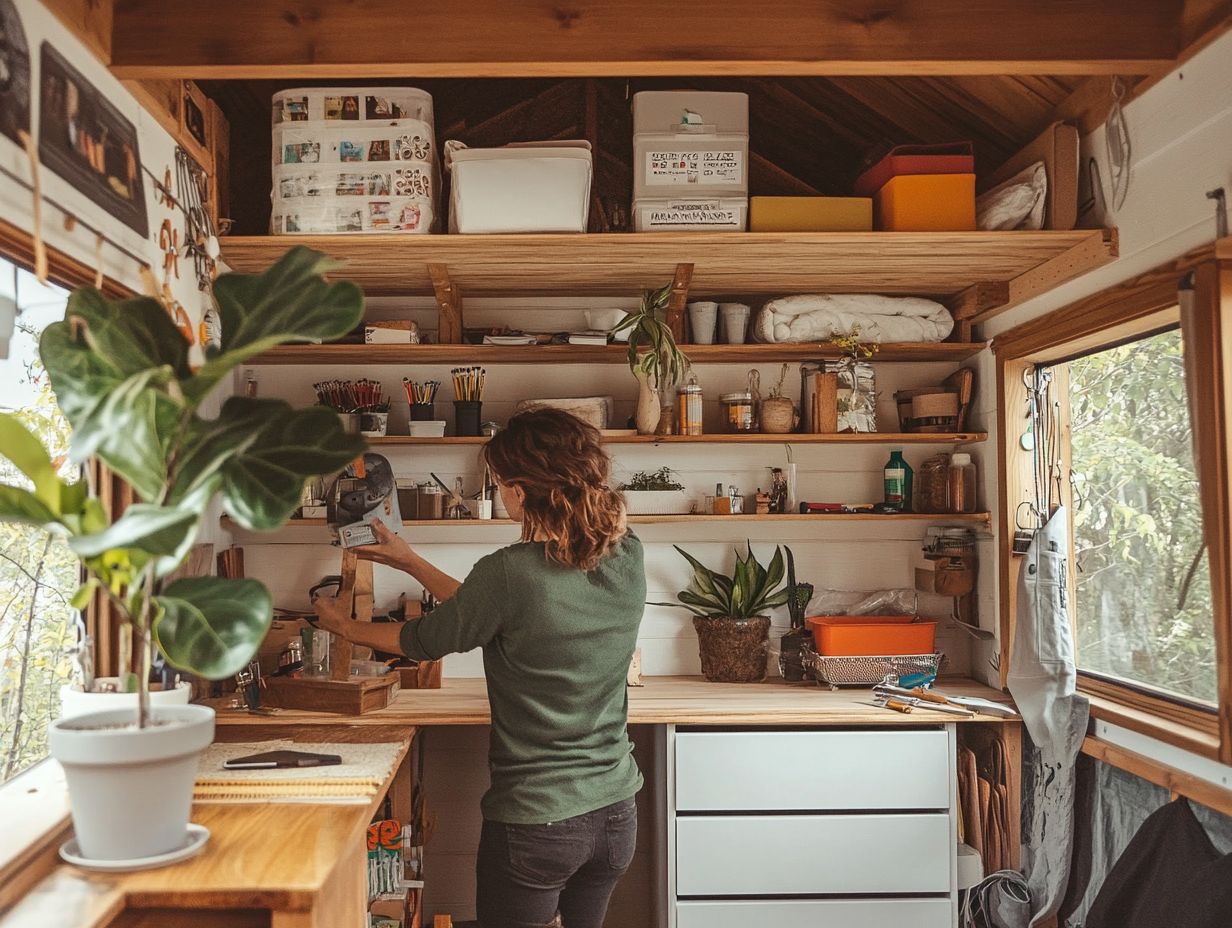
Pests and rodents can be a challenge in a tiny house, but you can protect your home from unwanted intruders. With proactive prevention and maintenance strategies, you can effectively safeguard your tiny home.
Common issues include ants, mice, and spiders. Regular inspections help identify potential problem areas early, enabling you to tackle infestations before they escalate.
Consider humane deterrents like essential oils or natural repellents to keep pests at bay without causing harm. Seal cracks, repair leaks, and store food securely to reduce pest invasions.
By adopting these thoughtful practices, you can create a safe and inviting environment in your tiny home, free from the unwelcome presence of pests.
6. Insulating for Extreme Temperatures
Insulate your tiny house for comfort and energy efficiency. This enhances your living space and reduces your dependence on heating and cooling systems.
Choosing the right materials like spray foam, cellulose, or rigid foam boards creates an air-tight barrier. This prevents heat loss during winter and keeps interiors refreshingly cool in summer.
A well-designed HVAC system works hand-in-hand with effective insulation, ensuring optimal air circulation and temperature control. This can significantly cut your energy costs over time.
Embracing these strategies not only helps you create a cozy tiny home, but also promotes a sustainable lifestyle.
7. Dealing with Moisture and Mold Issues
Managing moisture and mold is vital for your health and comfort. Effective humidity control measures can prevent condensation problems.
Everyday activities like cooking and showering raise humidity levels. This can create a breeding ground for mold.
To tackle this challenge, install proper ventilation systems and use dehumidifiers to actively reduce moisture in the air. These steps are essential in small living spaces where air circulation can be limited.
The presence of mold can pose significant health risks, including respiratory issues and allergies, while also threatening the structural integrity of your tiny home. By maintaining a balanced indoor environment and engaging in DIY projects for tiny house enthusiasts, you can greatly enhance your quality of life and ensure that your tiny abode remains a safe and inviting sanctuary.
8. Upgrade Your Appliances Today!
Upgrading to energy-efficient appliances in your tiny house champions sustainability. It also slashes your energy costs, making it a vital choice for modern tiny home living.
These devices use less electricity and are designed to extend their lifespan by minimizing wear and tear. This means you’ll enjoy fewer replacements and generate less waste.
The impressive energy savings translate into lower utility bills, freeing up funds for other facets of your minimalist lifestyle. Opting for ENERGY STAR certified appliances ensures that you re adhering to strict efficiency guidelines, benefiting your household while contributing to a reduced overall carbon footprint.
For those navigating compact spaces, exploring energy-efficient options like space-saving dishwashers or refrigerators specifically designed for tiny homes can elevate your living experience while championing eco-friendly practices.
9. Creating a Functional Kitchen
Creating a functional kitchen in your tiny house is essential for making the most of your cooking space. This ensures every inch of space is utilized to its fullest potential.
To achieve this, consider layout options that promote easy movement and workflow, like the classic work triangle connecting your stove, sink, and refrigerator. Prioritize a layout that complements your kitchen area.
Storage solutions are equally important; think vertical space and multi-functional pieces such as foldable tables or innovative shelving.
Compact appliances specifically designed for smaller areas can blend style and practicality without compromising aesthetics. Choosing appliances that meet specific energy efficiency standards can also enhance your experience.
By thoughtfully selecting each design element, including colors and materials, you can craft an inviting atmosphere where functionality meets your unique flair. Transform even the coziest kitchens into elegant culinary spaces.
10. Dealing with Limited Bathroom Space
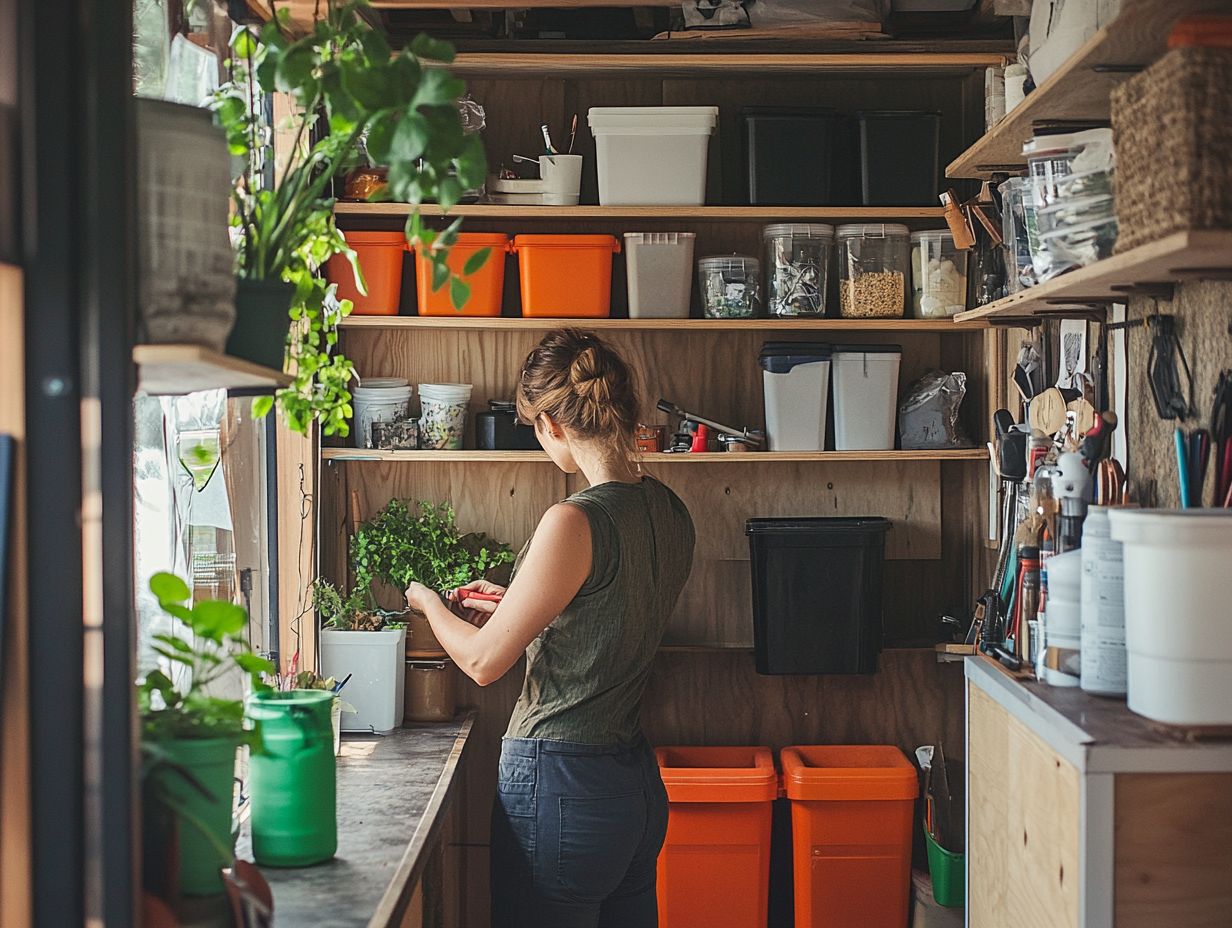
Dealing with limited bathroom space in a tiny house calls for innovative design solutions that balance comfort and functionality without sacrificing style. This is especially important when considering water source and plumbing needs.
It s essential to prioritize elements that maximize efficiency while fostering a serene environment. Compact fixtures, like wall-mounted sinks and petite bathtubs, can truly transform your space by conserving precious square footage.
Think about incorporating multifunctional furniture, such as benches that double as storage or folding mirrors. This adds versatility without cluttering the area.
By integrating eco-friendly options like composting toilets and water tanks, you not only save space but also embrace sustainable living.
Smart storage solutions can elevate your tiny bathroom into a well-designed sanctuary. Utilize vertical space with shelves above the toilet or under-sink organizers to create a space that feels both spacious and welcoming, essential for winterization.
11. Transform Your Outdoor Oasis!
Maximizing your outdoor space in a tiny house elevates your living experience. It offers a delightful blend of relaxation, entertainment, and the beauty of nature right at your doorstep, perfect for off-grid living.
By carefully designing features like cozy decks or stylish patios, you can create an inviting ambiance that harmoniously merges with your indoor living spaces. Incorporating comfortable outdoor furniture think lounge chairs and elegant dining sets encourages leisure and fosters social gatherings.
Making these areas ideal for hosting friends or simply unwinding after a long day is essential. Strategically using plants and lighting can dramatically transform your outdoor setting into a serene retreat, echoing the comfort of your indoors while seamlessly inviting the natural world into your daily life.
12. Improving Air Quality
Improving air quality in your tiny house is crucial for both your health and overall comfort. Pay close attention to ventilation systems, which manage condensation issues and utilize air filtration methods to create a truly healthy living environment.
To achieve optimal air quality, consider utilizing air purifiers. They can significantly reduce pollutants, allergens, and unpleasant odors that tend to gather in snug spaces.
Proper ventilation is vital for fresh air. This helps eliminate stale air and combat moisture buildup, which is a common concern in compact homes.
Don t wait! Regular maintenance of these systems is crucial. By checking filters, ducts, and ventilation openings, you can prevent issues that might compromise your air quality.
Consulting with an HVAC (Heating, Ventilation, and Air Conditioning) technician provides invaluable insights on optimizing your air systems. Their expertise will guide you in selecting the right equipment and maintaining your existing units for maximum efficiency.
13. Creating a Comfortable Sleeping Area
Creating a comfortable sleeping area in your tiny house is essential for ensuring restful nights and rejuvenating mornings. It’s about blending thoughtful design with personal touches that reflect your style.
To achieve this, consider the type of bed that best suits your space. Lofted beds can free up valuable floor area, while Murphy beds offer versatility without compromising aesthetics.
Room layout is crucial. Strategically placing furniture to promote flow can significantly enhance the overall comfort of the area.
Incorporating natural materials like wood and organic textiles contributes to a calming atmosphere and supports a healthier indoor environment.
Ultimately, by prioritizing comfort in your compact living setup, you can transform that small area into a cozy retreat that fosters relaxation and tranquility.
14. Dealing with Noise and Privacy Issues
Navigating noise and privacy challenges in a tiny house can feel daunting due to close quarters, but with some smart design ideas, like caulking for soundproofing, you can cultivate a serene and private living space.
Integrating soundproofing techniques like acoustic panels and plush carpets significantly reduces ambient noise, transforming your home into a tranquil haven.
Thoughtful layout adjustments, such as positioning bedrooms away from communal areas or employing strategic furniture placements, enhance the overall sense of peace.
Incorporating privacy-enhancing features like curtains or room dividers not only provides necessary separation but also adds to the cozy atmosphere of your space. These design choices create a retreat-like ambiance, making tiny living both enjoyable and functional.
15. Maintaining and Repairing a Tiny House on Wheels
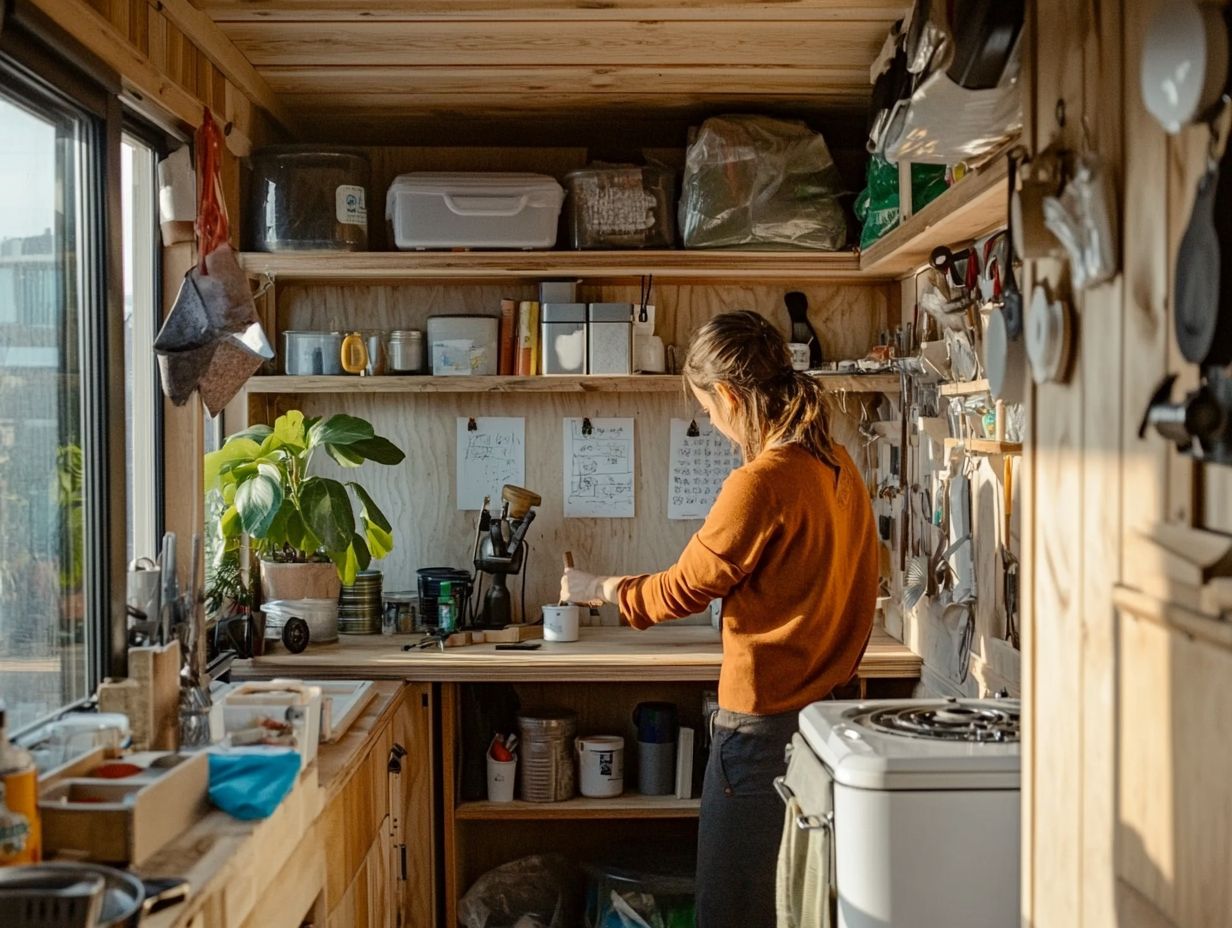
Maintaining and repairing a tiny house on wheels requires a distinct skill set and knowledge base to ensure both mobility and structural integrity. This is especially important when dealing with concrete blocks used for stability, making regular check-ups essential.
These small yet intricate structures demand diligent attention to various components. Check the wheels to monitor tire pressure, tread wear, and overall condition.
The undercarriage needs routine cleaning and inspection for rust. Safeguarding against moisture and pests through proper insulation is also crucial.
Experienced construction professionals are invaluable in this maintenance routine. They offer guidance on repairs and renovations, extending the life of your tiny home. Their expertise helps you avoid costly issues in the future and ensures that safety remains a top priority, whether you’re parked or on the move.
Frequently Asked Questions
What are some common tiny house problems that can be fixed with quick DIY solutions, such as plumbing issues related to water tanks?
Some common tiny house problems include plumbing issues related to water tanks, electrical problems, leaky roofs, and lack of storage space. Great news! Many of these can be tackled with simple DIY fixes.
How can I fix a clogged drain in my tiny house, especially considering the water systems?
To fix a clogged drain, try pouring boiling water down the drain. You can also use a plunger or a mixture of baking soda and vinegar. If these methods don’t work, you may need to call a professional plumber familiar with tiny house plumbing.
What should I do if my tiny house’s electricity goes out, especially when living off-grid?
If your electricity goes out, first check your circuit breaker to see if a fuse has blown. If the issue isn’t there, unplug and re-plug any approved appliances that may have caused the outage.
If the problem persists, it may indicate a larger electrical issue that requires professional help. Don t wait! Check your circuit breaker now!
How can I repair a leaky roof in my tiny house, especially during the winterization process?
If you have a leaky roof, act quickly to patch leaks before winter hits! Use roof sealant or patch kits to fix small holes or cracks.
For larger leaks, you might need to replace damaged shingles or call a professional roofer for assistance.
What are some DIY solutions for adding more storage space in a tiny house and maximizing vertical space?
- Utilize vertical space by installing shelves or hooks on walls.
- Use multi-functional furniture such as storage ottomans or beds with built-in drawers.
- Declutter and organize your belongings to maximize space.
Ensure erosion control during the process for better stability.
Can I fix a broken appliance in my tiny house on my own, especially those approved appliances?
It depends on the extent of the damage and your level of expertise. Some simple repairs, like changing a light bulb or replacing a fuse, can be done on your own.
However, for more complex issues, especially with approved appliances, it’s best to call a professional to avoid causing further damage.

